Core Facilities & Capabilities
Laser Powder Bed Fusion
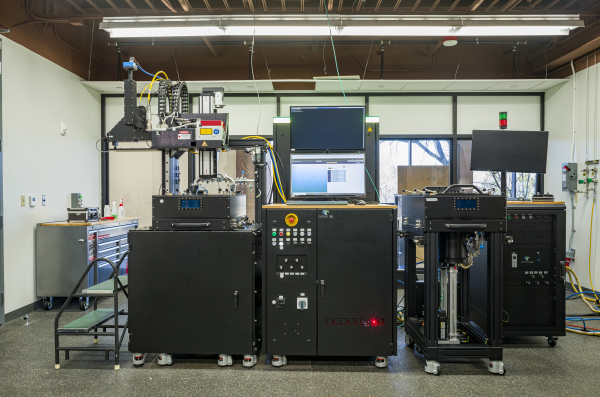
Aconity MIDI SLM System
The Aconity MIDI SLM System is a cutting-edge high-quality 3D laser metal-printer for research into advanced
fabrication of material structures, innovative metal alloys, metal-and-ceramic composites
and other materials. This machine features a1kW laser, interchangeable build diameters
from 50 to 170mm, a high-temperature build platform controllable up to 1200C, and
a high-speed camera system and two pyrometers for in-situ process monitoring.
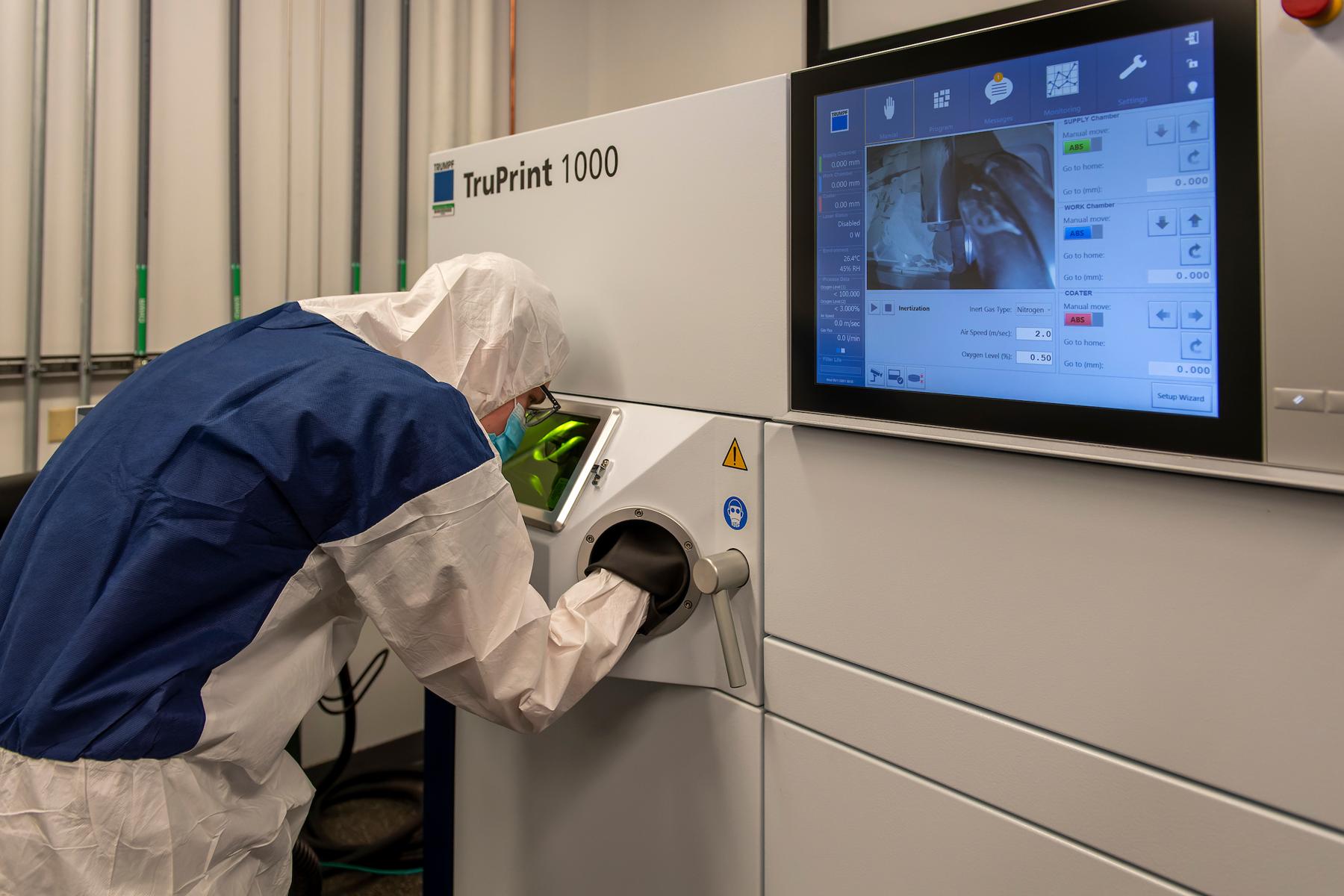
Trumpf TruPrint 1000
With a cylindrical build volume of 100 mm in diameter and 100 mm in height, the TruPrint 1000 can be used for the generative production of small industrial single parts and series
in almost any geometric shape. Even relatively complex shapes can be quickly and easily
converted from the CAD design to a top-quality 3D metallic component in a wide variety
of common alloys, aerospace alloys, and refractory alloys. It also comes with in-situ
monitoring through a camera and simple feature recognition.
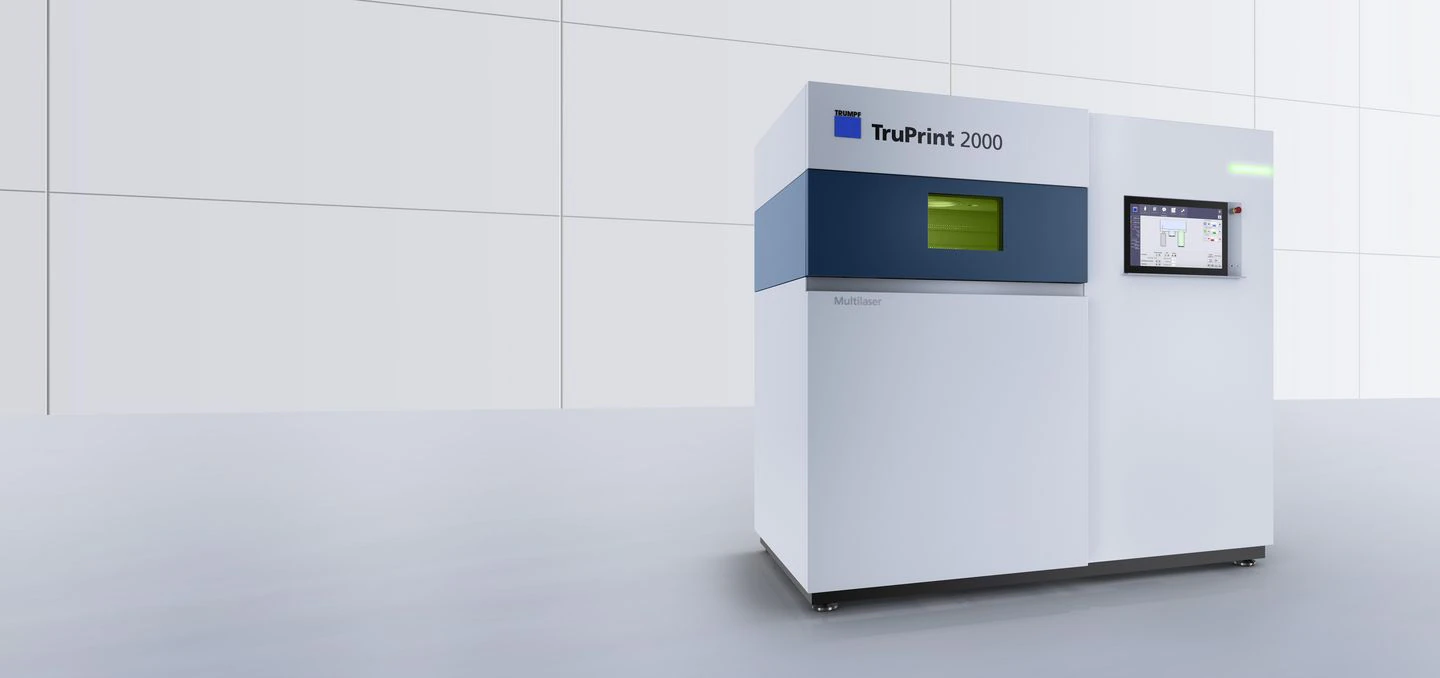
Trumpf TruPrint 2000
With its small 55-μm laser beam diameter, the TruPrint 2000 provides a high-quality printing result that impresses with its surface quality and
level of detail. It offers a cylindrical build volume of 200 mm in diameter and 200
mm in height. The laser has been upgraded to 500W to accommodate processing of refractory
materials. It also comes with a heated stage controllable up to 200C. The TruPrint
2000 has a powder preparation station for fast and simple pre/post-processing powders,
and is completely enclosed so the user does not come into contact with the powder.
Directed Energy Deposition
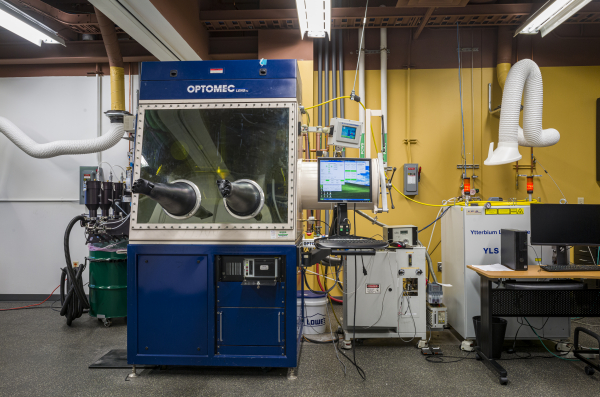
Optomec LENS-750
The Optomec LENS-750 Laser Engineered Net Shaping System is a highly flexible 3D printer that uses metal
for manufacturing, processing, and advanced research on alloy development. Featuring
four independent powder hoppers, this machine can be used to make compositionally
and functionally graded materials.
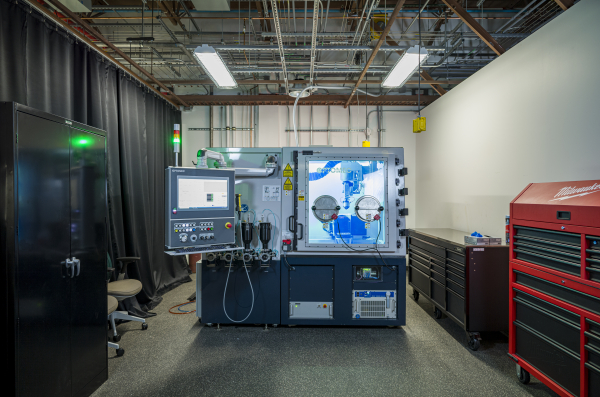
Optomec LENS CS-250
The LENS CS-250 System is the latest model to come out of Optomec Inc. Featuring four powder hoppers,
this machine can be used to make compositionally and functionally graded materials.
This machine also comes with a 5-axis system to enable complex shapes and repairs
on existing geometries. A 1KW nLight laser system can be used to print highly reflective
materials like copper and its alloys, and an onboard lens changing system allows the
user to change the laser spot size between materials, or within a single setup.
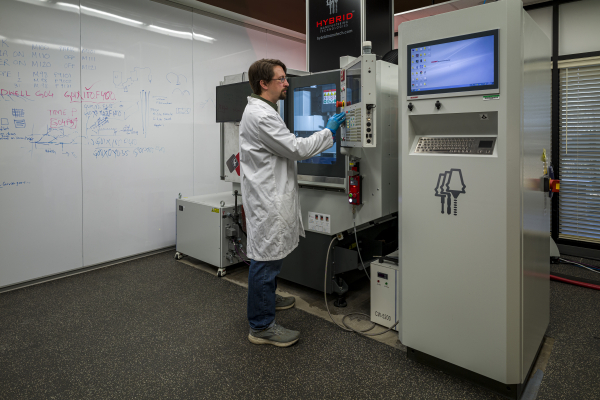
Hybrid Manufacturing AMBIT™
The Hybrid Manufacturing AMBIT™ combines both the additive and subtractive part of manufacturing in one system. Featuring
the latest patented and award-winning AMBIT™ laser-based directed energy deposition
heads, we can deposit metal using interchangeable 1mm and 3mm beam widths. Additional
types of laser processing are supported by the Series 7 system for drilling, ablating
and finishing metal.
Solid State Processing
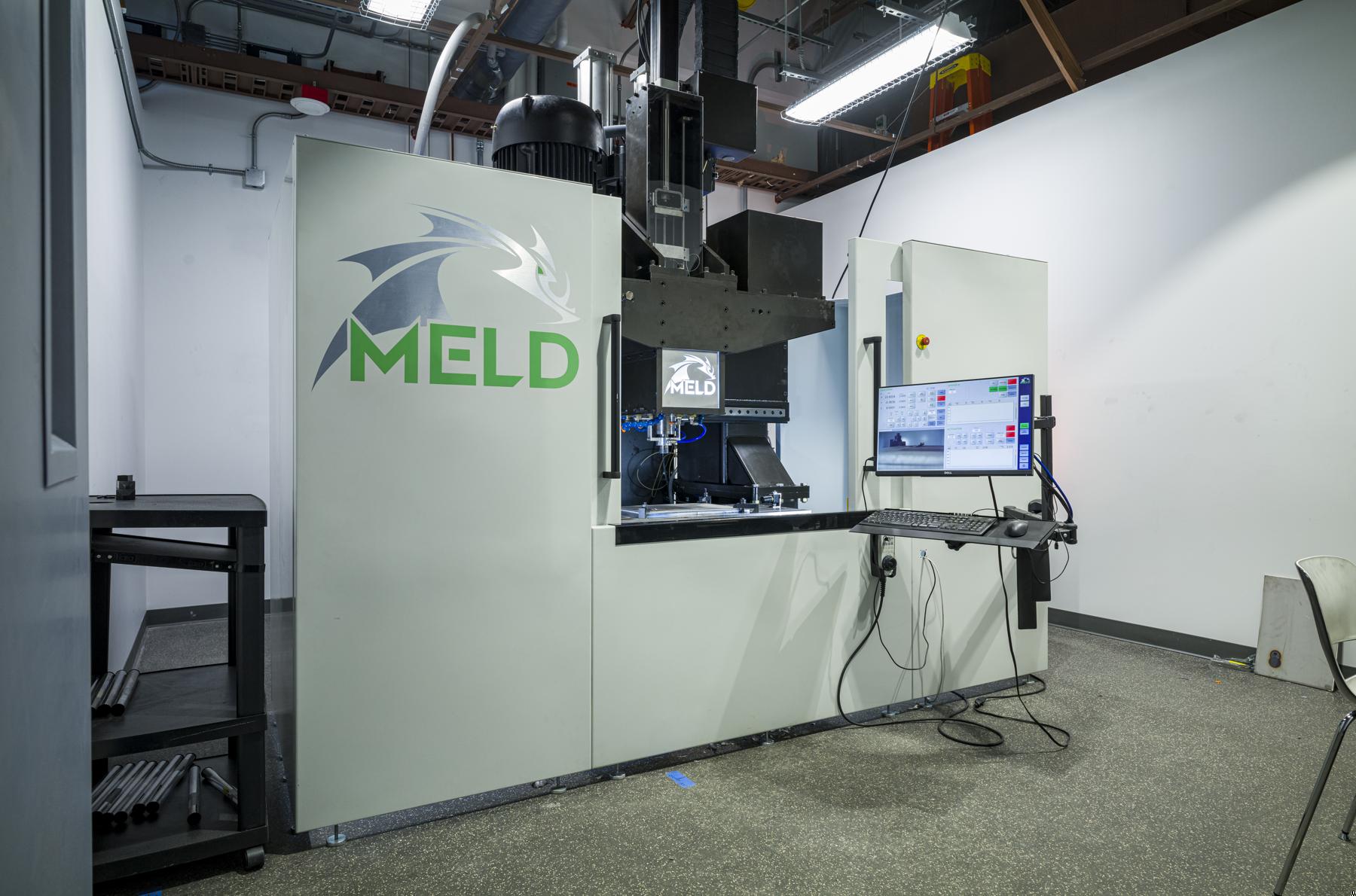
MELD B8: Solid-State Processing
MELD B8: Solid-State Processing is a solid-state process, meaning the material does not reach the melting temperature
during the process. It offers a wide range of capabilities, including additive friction
stir deposition (AFSD), coating applications, component repair, metal joining, and
custom metal alloy and metal matrix composite billet and part fabrication. MELD is
a single-step process that does not require time-consuming, follow-on processes such
as hot isostatic pressing (HIP) or sintering to improve the quality of the deposited
material.
Binder Jetting
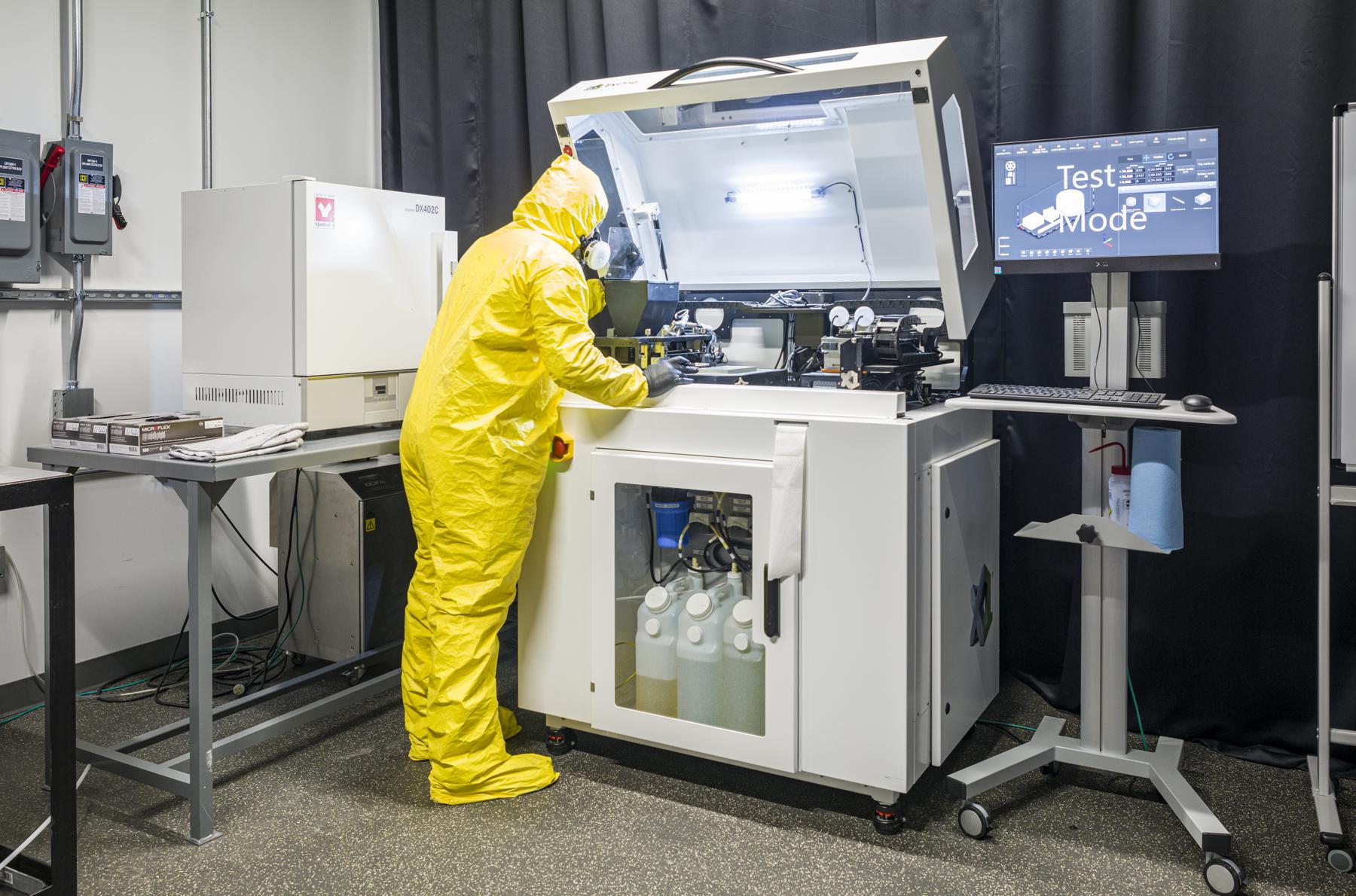
ExOne Innovent+
A multipurpose additive tool with increased dust control and the most advanced powder
dispensing on the market. Innovent+™ is designed to reliably produce functional parts
in a variety of materials. It is easy to use and features state-of-the-art recoating
technology, allowing for the widest range of materials to be printed while producing
the most consistent and uniform print bed. This machine can process a wide range of
powders, including metals, ceramics, composites and other powder materials.
Precision Microdispensing System
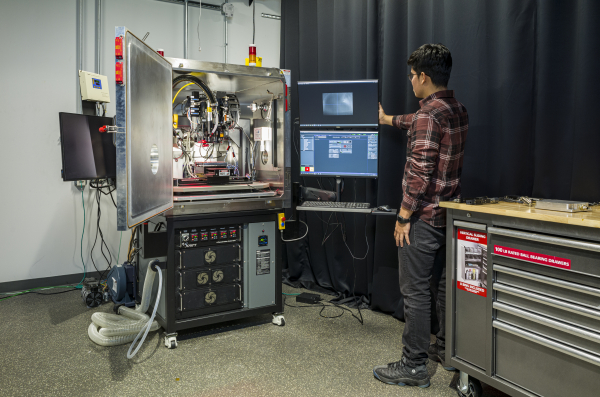
nScrypt 3Dn
The 3Dn Series is a gantry-based, high-precision motion platform running nScrypt Machine
Tool Software for exceptional control. For example, the user can configure the system
with multiple Micro-Dispensing tool heads (gizmos) or multiple heads of different
functionality, such as material extrusion, micro-milling, or pick and place. Other
options include laser sintering, heating, UV curing, laser mapping, and onboard imaging,
and has been fitted with atmosphere control and monitoring equipment as well as in-situ
monitoring equipment. Regardless of configuration, the platform builds fine features
at high speeds.
Fused Deposition Modeling and Stereolithography
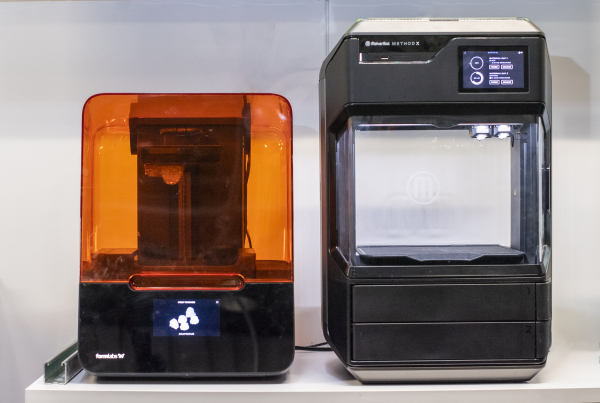
ZORTRAX M200+, MAKERBOT METHOD X, FORMLABS FORM 3+, MARKFORGED MARK TWO
Our small-sized printers are used for both classroom and polymer-based research. Materials
vary from plastics such as ABS and PC-ISO, fiber-reinforced polymers, and various
resins, with feature sizes as small as 25 microns and build volumes as large as 5600cc.
Powder Processing
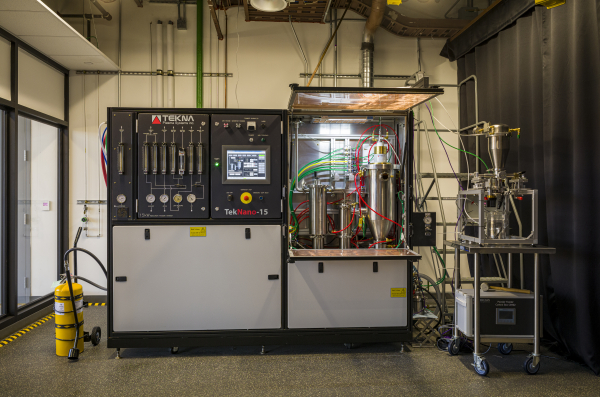
TEKNA TekSphero-15: Spheroidization System TekSphero-15
The TEKNA TekSphero-15: Spheroidization System TekSphero-15 is a plasma treatment system uniquely designed to manufacture and process metal and
ceramic powder, which enables the design and prototyping of new materials for additive
manufacturing. The unique design of the inductively coupled plasma eliminates any
potential contamination from potential electrode materials seen in other plasma equipment.
This unit is equipped with a spheroidization reactor and a nanoreactor to produce
a powder with a particle-sized distribution from nano to micro scales. The lab-scale
design of this unit allows for rapid turnarounds of experimental and computational
materials design.